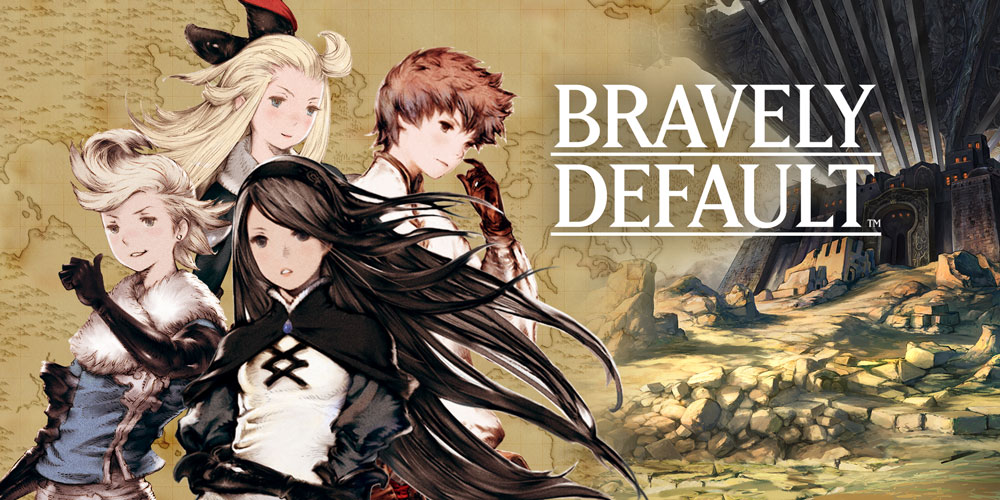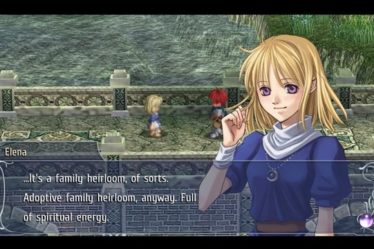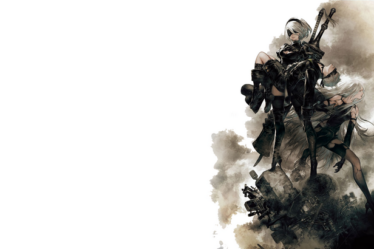
This article was originally published in Italian on Games969.com in 2013.
Eagerly awaited by fans of the genre as an unmissable event of the winter season, the long-anticipated title from Silicon Studio (3D Dot Game Heroes), Bravely Default: Where the Fairy Flies, finally arrives in Europe after a long year since its release in the Land of the Rising Sun. This latest outsourced effort from Square Enix—developed by an external studio but considered by the renowned software house to be a true spin-off of the Final Fantasy series—sets the stage for the classic-flavored adventures of four heroes, bound by fate in a mission that will lead them to uncover the secret behind the decline of the crystals, a central element in the historical iconography of the RPG saga created by Hironobu Sakaguchi. Can a narrative universe that has accompanied RPG enthusiasts for years still shine on its own in today’s highly diversified commercial landscape? Let’s find out together.
As mentioned earlier, Bravely Default was conceived—at least in the intentions of its development team—as a portable spin-off of the Final Fantasy series. While it distances itself aesthetically thanks to an inspired artistic direction by the formidable Akihiko Yoshida (Vagrant Story, Final Fantasy Tactics, Final Fantasy XIV), everything surrounding Bravely Default—the themes, mythology, and the pantheon of creatures inhabiting its universe—is clearly derived from the legacy of the long-gone Squaresoft. The very introduction, where the four protagonists are presented one by one against the backdrop of a world in turmoil, echoes the narrative structure of the NES/Famicom-era trilogy of the yellow-feathered saga. However, the atmosphere in Bravely Default is much more refined and supported by a significantly better-written script than the classic titles of its mother series, yet its core premise remains a heartfelt homage to a franchise that now feels alien to a software house like Square Enix, which seems to have lost the brilliance that once set its products apart from all others in the gaming industry.
Following a path that intertwines familiar situations and key moments from the historic RPG series, the game takes us on the journey of four heroes distinguished by motivations and backstories that, while epic, feel somewhat faded—perhaps due to a plot that remains deeply rooted in narrative clichés and predictable developments.
Naotaka Hayashi—the game’s writer and a prominent figure in the world of visual novels, best known for his influential work on Steins;Gate—makes clear attempts to modernize the story of Tiz and his three companions. The result is a classic narrative, at times predictable, but undeniably well-written and populated by a believable, albeit not particularly memorable, cast of characters. The inclusion of small, optional skits reminiscent of the Tales of series is a deliberate attempt to add depth and nuance to the characters, who might otherwise suffer from the two-dimensionality of fairy tale heroes from bygone eras. It is evident that Square Enix wanted to emphasize the traditional aspects of the franchise that made Square a gaming powerhouse of the past twenty years. However, paradoxically, this approach confines the creative processes behind the script, character development, and themes to a well-trodden path. For players seeking fresh narrative twists and strong characters to identify with, this adherence to tradition may feel stifling.
The core gameplay of Bravely Default is built on the foundation of a classic turn-based RPG with a strong emphasis on party member customization. Borrowing heavily from the job system seen in Final Fantasy V, the game allows players to tailor their characters’ specializations according to their needs. The ability to create hybrid jobs—resulting from a character’s experience across different roles—further enriches this customization. Character progression is split into two separate growth systems: a numerical experience level that dictates stat increases and a job level that grows independently, unlocking unique skills and passive abilities. In short, each character has both a general level that marks their statistical progression and a job level that increases with class-specific battle experience.
However, Bravely Default’s gameplay holds plenty of surprises that not only entertain but also intrigue with their depth. It takes several hours of play to fully grasp the intricacies of the battle and progression systems.
The turn-based combat introduces an innovative mechanic that serves as the game’s standout feature. Players can use two special commands that significantly enhance the traditional turn-based system: “Brave” and “Default.” Selecting “Brave” allows a character to act up to three extra times in a single turn at the cost of future turns, while “Default” has the character guard for one turn, reducing damage taken and storing Brave Points (BP) for later use. While this system may seem simple at first glance, Silicon Studio has successfully amplified its strategic depth, creating a risk-reward mechanic where bold moves can lead to great victories. Some special moves require meeting specific conditions—such as using “Brave” ten times in a row—allowing players to turn the tide of battle through sheer tactical prowess.
Another key battle mechanic is “Bravely Second,” which lets players freeze time for up to three turns by spending special points (SP), which regenerate only when the console is in sleep mode. To prevent overuse, SP can also be purchased through microtransactions, though we doubt most players will engage with this system. Additionally, Nintendo 3DS’s StreetPass and SpotPass features allow players to summon friends as powerful allies for one-turn attacks or to send their own characters to assist others.
Beyond its intricate job system and tactical combat, the game follows a familiar RPG formula: characters venture into numerous dungeons, interspersed with visits to various settlements. While exploration isn’t a primary gameplay focus, dungeons feature multiple floors, traps, and environmental puzzles, though their design isn’t particularly expansive or innovative. The world map, unfortunately, serves more as a backdrop than an integral gameplay element, as the linear story rarely encourages backtracking or exploration of previously visited areas.
That said, the game is incredibly polished and accessible. Players can tweak a variety of settings, including battle difficulty, encounter rates, animation speeds, on-screen indicators, experience and gold acquisition rates, and even switch between English and Japanese voiceovers—where the latter, as always, is recommended for its stellar cast of voice actors.
Akihiko Yoshida is in top form, crafting a game that is as visually stunning as it is mechanically deep. The art style blends pre-rendered parallax backgrounds with stereoscopic pop-up effects, while the character designs embrace the super-deformed aesthetic cherished by RPG fans of the 8/16-bit era. The sheer effort put into designing not only the main characters but also the environments and creatures of Luxendarc surpasses many high-budget home console titles. While dungeon and world map polygon counts reveal the game’s 3DS limitations, the masterful artistic direction more than compensates for any technical shortcomings.
The game’s aesthetic is complemented by an equally outstanding soundtrack. Scored by Revo of Linked Horizon—who recently gained fame for his work on Attack on Titan’s opening themes—the music is a feast for the ears, making it one of those games that demand a good pair of headphones. Revo’s compositions elevate the experience, reinforcing the sense of nostalgia that permeates the entire game.
Bravely Default: Where the Fairy Flies is undoubtedly an excellent title, blending classic RPG storytelling with innovative gameplay mechanics that challenge genre conventions. Its high accessibility and top-tier artistic quality make it one of the best Japanese RPGs currently available worldwide. While its intentionally retro flavor may not appeal to everyone, the game stands as a heartfelt tribute to a bygone era of RPGs—an era that, for better or worse, may never return.


